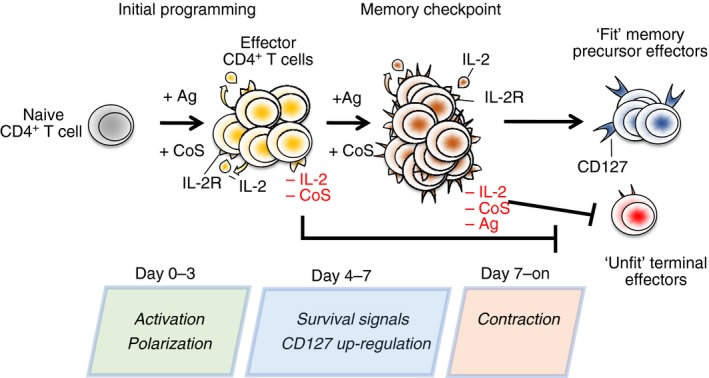Figure 1.

Many key fate decisions are made within the first 2 days or so following CD4 T‐cell priming including T helper type 1 (Th1)/Th2 polarization and the degree to which the cells can form memory. Such early decisions (programming) are especially key in experimental models and immunization protocols using non‐replicating antigen in the absence of adjuvants that facilitate prolonged presentation, which often restrict cognate interactions to within the ‘initial programming’ window. Antigen (Ag), Co‐stimulation (Cos) and interleukin‐2 (IL‐2) are critical signals in programming memory potential. In contrast, replicating pathogens present CD4 T cells with the chance to reencounter antigen during the effector phase of the immune response. Ag‐, IL‐2‐, and Cos‐dependent signals delivered to effector cells during a defined ‘memory checkpoint’ in these situations can modulate the realization of memory fate programmed during initial priming. In the absence of proper signalling during programming or during the memory checkpoint, effector cells form terminal populations with limited capacity to give rise to memory.
